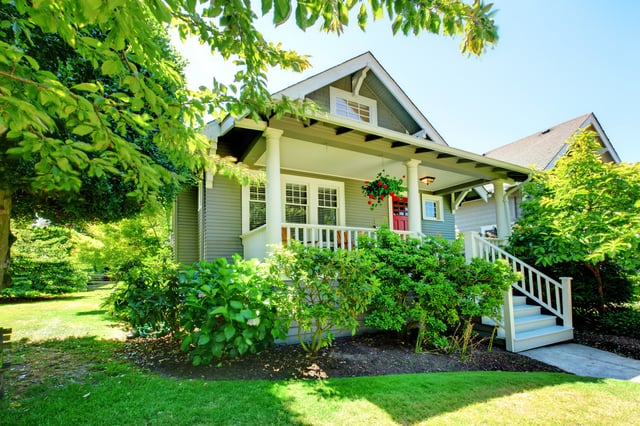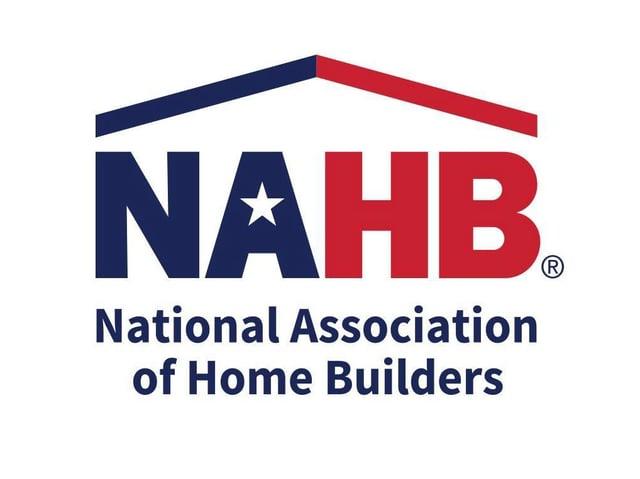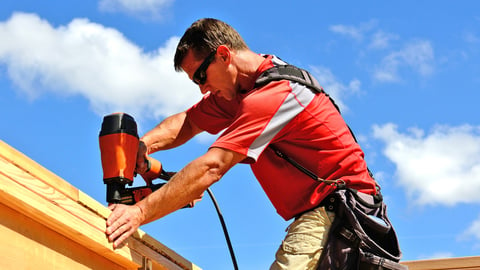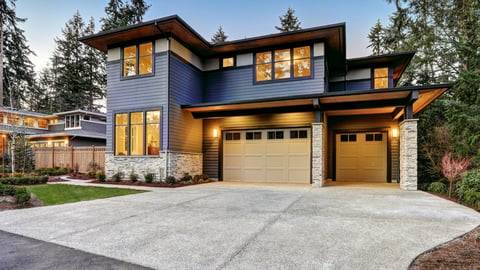Sizing up residential construction
With mortgage rates above 7% – making housing affordability even more difficult for the average American — some builders have been making adjustments to compensate.
This includes using less costly materials along with some residential construction companies turning to smaller builds.
But the rules of the playing field didn’t change overnight.
Home sizes and off-site construction see continuing declines: as home sizes have seen a gradual decline over the past decade, so has the number of residential builds created off-site.
Citing data from the Census Bureau’s Survey of Construction (SOC), the National Association of Home Builders (NAHB) said a total of 29,000 homes at 5,000-plus square feet were started in 2022, down from 33,000 in 2021.
In comparison, new 5,000-plus square feet homes reached a peak of 45,000 in 2006 and then fell to 37,000 in 2007.
On a percentage basis, the share of new homes started with 5,000 square feet or more of living space was also down slightly from 2.9% in 2021 to 2.85% in 2022. In 2015, the 5,000-plus square foot home share reached a peak of 3.92%. Since then, the share has fluctuated in a band between 2.5% and 3.10%.
The 2022 decline is in congruence with the recent downward trend in the median and average size of new single-family homes.
During the pandemic, the need for more residential space to meet different at-home purposes provided a boost to the size of homes being built. Interest rates also remained low to reasonable during the period. But in 2022, interest rates continued to climb resulting in a wider gap for housing affordability. The impact was the demand for smaller homes, the NAHB said.
“Housing affordability has reached unprecedented levels,” Matt Saunders, senior vice president of building products research at John Burns Research and Consulting, said during a recent webinar hosted by the National Lumber and Building Material Dealers Association.
Saunders noted that some home builders have switched to building smaller homes while swapping out lesser-priced materials in order to bring down the overall cost of a new home.
According to second quarter 2023 data from the Census Quarterly Starts and Completions by Purpose and Design and NAHB analysis, the median single-family square floor area declined to 2,191 square feet, the lowest reading since the end of 2010. The average square footage for new single-family homes also fell to 2,415 square feet.
Since the lows of the Great Recession, the average new single-family home is 3% higher at 2,465 feet with the median size up 6% to 2,234 feet, according to the NAHB.
While home sizes rose from 2009 to 2015 with entry-level new construction losing market share, home sizes declined between 2016 and 2020 as more starter homes were developed.
Steve Sallah, CEO of LBM Advantage — the forest products and building material buying group — said when materials were hard to come by due to supply chain constraints during the pandemic many dealers found replacements that were cheaper.
After a brief increase during the post-COVID building boom, home size is trending lower and will likely do so as housing affordability remains constrained, the NAHB said.
That’s not what Don Rowe is seeing in the Omaha, Nebraska market. The Vice President of Sales at Millard Lumber says “the middle market has been cut out” and high-end, large homes continue to be built.
New home sales fell 8.7% to a seasonally adjusted annual rate of 675,000 in August from the July revised rate of 739,000.
While the average new single-family home price rose by 1.2% to $514,000 in August from an average price of $507,900 in July, compared to a year ago, the average price is down 3.15%. But mortgage rates have ascended from a year ago.
Lots are also diminishing, according to new data from the SOC that shows 42% of new single-family detached homes sold in 2022 were built on lots under 7,000 square feet, which is 0.16 of an acre.
The NAHB noted that this is the highest share on record and reflects stark changes in the lot size distribution since the Census Bureau started tracking these series over 20 years ago when just 28% of new for-sale single-family detached homes were occupying lots of that size.
NAHB analysis — aggregating up and including all lots smaller than one-fifth of an acre — brings the share close to 68%. In contrast, less than half (46%) of new single-family detached spec homes were built on lots of that size in 1999, when the Census started tracking these data.
With pockets of the industry touting the benefits and cost-effectiveness, non-site build construction has not been a remedy for housing affordability.
In fact, the total market share of non-site built single-family homes (modular and panelized) was just 2% of single-family homes in 2022, according to completion data from the Census Bureau Survey of Construction data and NAHB analysis.
The trend is in contrast to industry commentary pushing for growth in off-site, factory-built home construction. Others are bucking the trend and pushing forward with the off-site strategy.
In September, BiltWise Structures (formerly Impresa Building Systems of Greenwood SC, LLC) launched a redirected business focus under recast ownership, new available buildable territory, and new branding.
BiltWise operates an off-site home production facility based in Greenwood, South Carolina and is now building for eight states, including Virginia, Georgia, Tennessee, Alabama, Florida, Texas, and the Carolinas.
The company says it uses an alternative construction method for regional builders and developers where their designed product is constructed off-site in "modules", and delivered to the project nearly complete.
Components built offsite in a systematic quality and climate-controlled indoor facility improve quality and shortens the construction cycle from site preparation to final certificate of occupancy, BiltWise said.
"Our core focus is serving builders and developers as their source for off-site systems-built construction of their projects,” said BiltWise President Dan Hobbs. “At full capacity, the Greenwood facility will produce over 1,000 modules, or roughly 400 – 600 homes per year. Our high-quality production and outstanding service to our customers is the core of our business model.”








